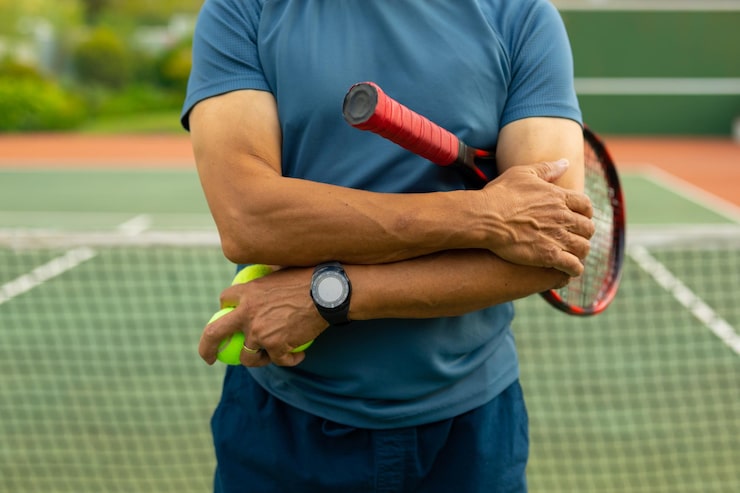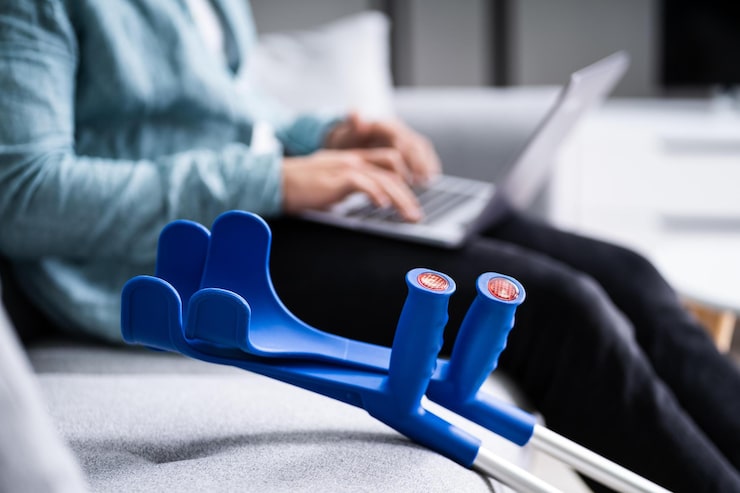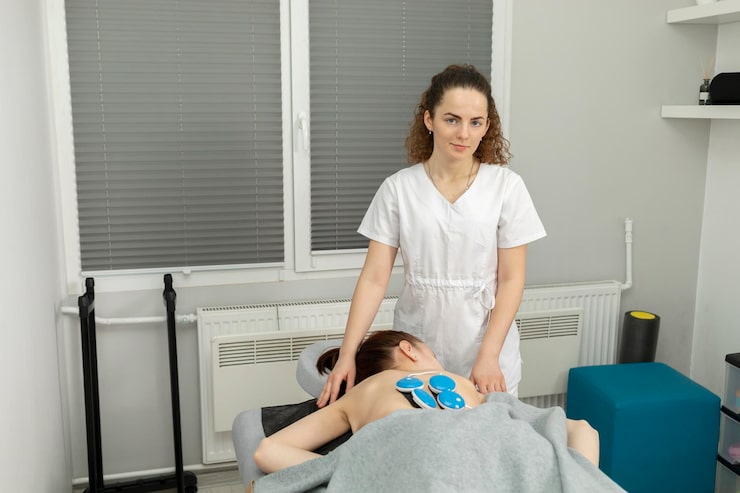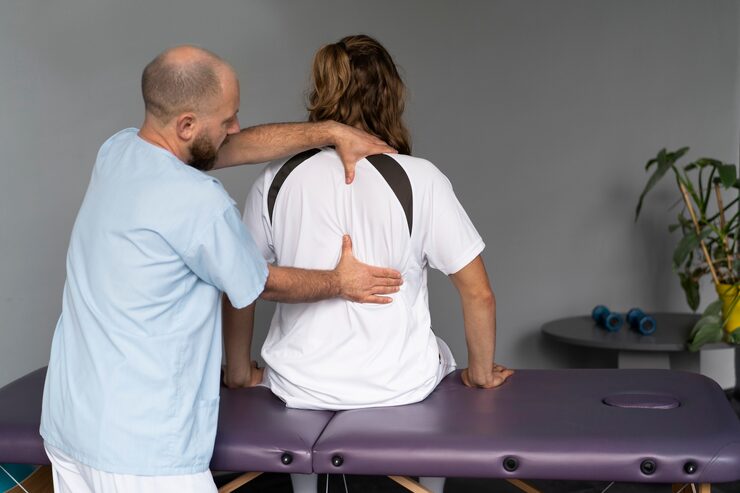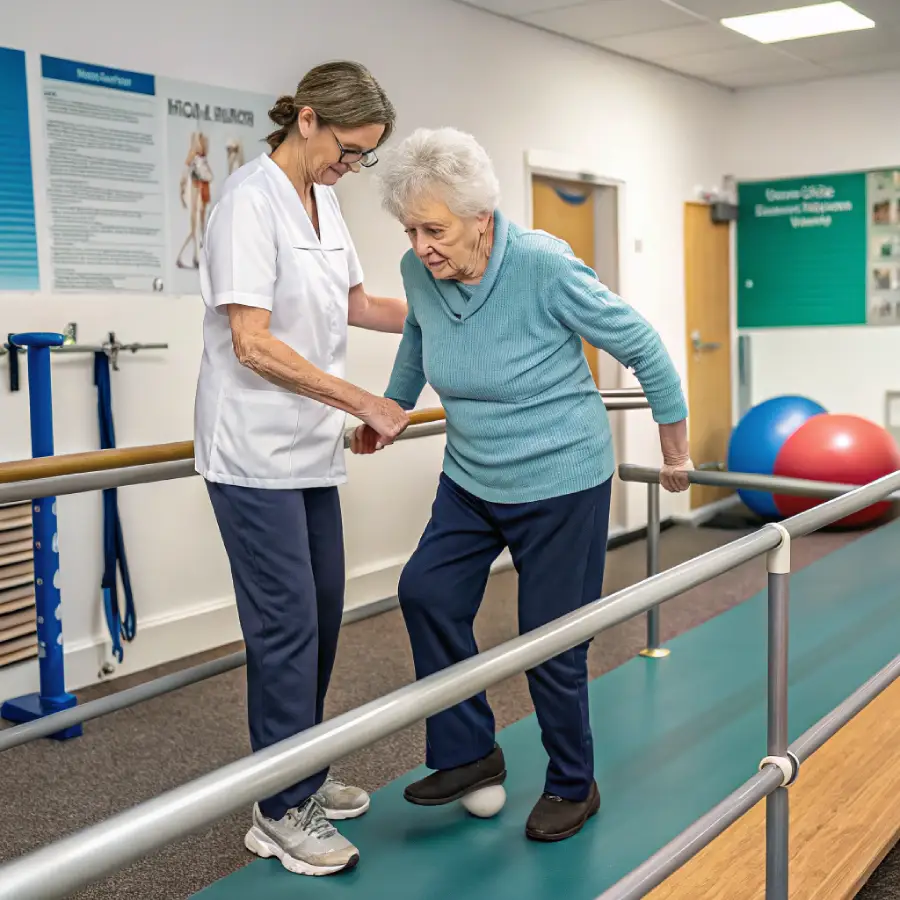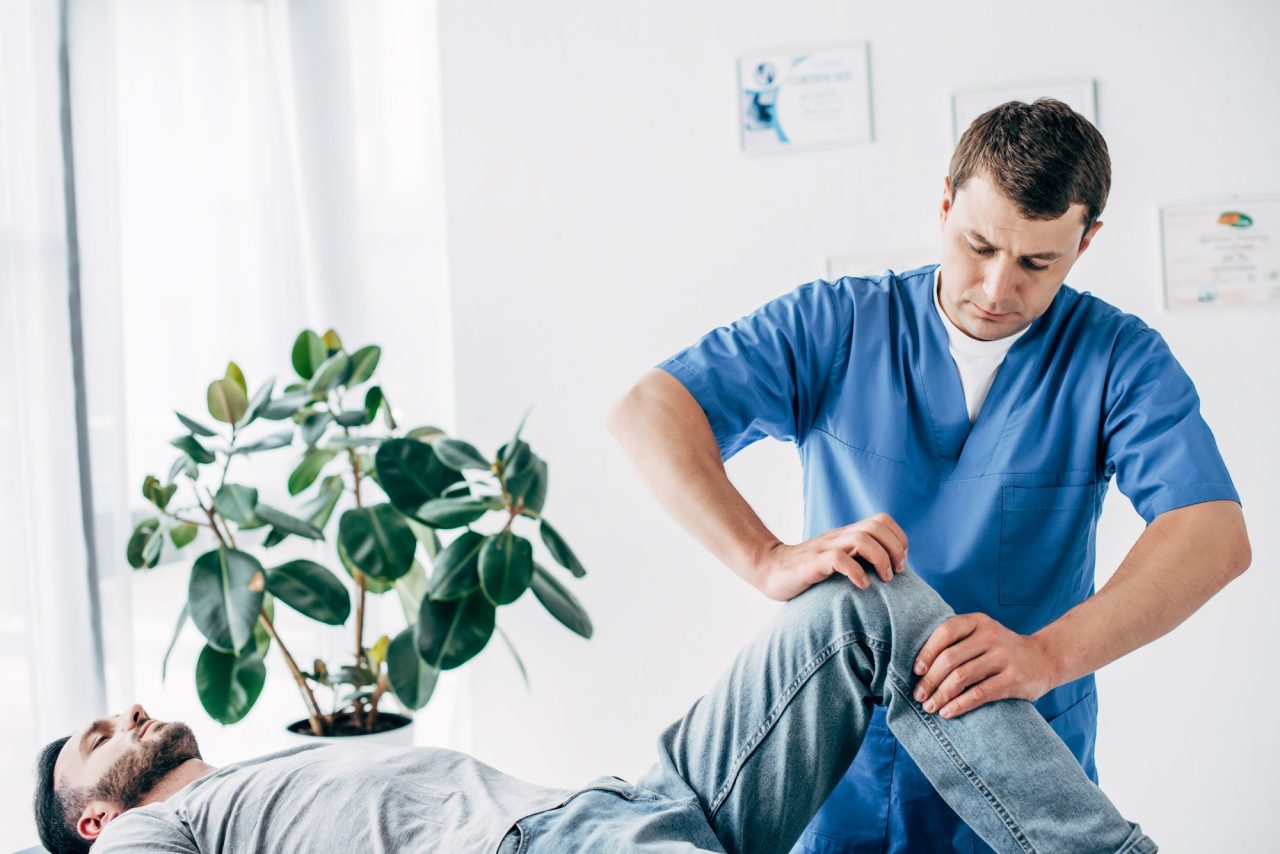How long does it take for tennis elbow to heal with physiotherapy? This question weighs heavily on anyone experiencing the persistent pain of lateral epicondylitis. Tennis elbow, characterized by inflammation and microtears in the tendons connecting forearm muscles to the elbow, affects millions annually—not just athletes but office workers, manual laborers, and anyone performing repetitive arm motions. To achieve mild tennis elbow recovery, many people search for the definitive answer to “how long does tennis elbow take to heal” with targeted physiotherapy.
Understanding the recovery timeline involves exploring effective tennis elbow exercises, identifying the best anti-inflammatory for tennis elbow, and determining whether a tennis elbow brace supports your healing journey. Many patients worry, “does tennis elbow ever go away?” The encouraging answer is yes, with proper treatment. This comprehensive guide will reveal exactly how to fix tennis elbow fast and provide evidence-based strategies on how to heal tennis elbow through physiotherapy, helping you return to pain-free movement sooner than you might expect.
Understanding Tennis Elbow and Its Impact on Daily Life
Tennis elbow, medically termed lateral epicondylitis, represents one of the most common overuse injuries affecting the upper extremity. This condition develops when repetitive gripping, twisting, or lifting motions cause tiny tears in the tendons that attach forearm muscles to the lateral epicondyle—the bony prominence on the outside of your elbow. Despite its name, research indicates that only 5% of tennis elbow cases actually occur in tennis players.
The condition manifests through distinctive symptoms that progressively worsen without intervention. Patients typically experience sharp or burning pain on the outer elbow, weakness in grip strength, and discomfort when lifting objects or shaking hands. These symptoms intensify during activities requiring wrist extension or forearm rotation, significantly impacting professional productivity and quality of life. Understanding the pathophysiology helps explain why physiotherapy serves as the gold standard treatment, addressing both symptoms and underlying biomechanical dysfunction.
The Biological Process Behind Tennis Elbow
At the cellular level, tennis elbow represents a degenerative condition rather than purely inflammatory. Modern imaging studies reveal that chronic cases involve angiofibroblastic degeneration—a process where normal tendon tissue breaks down without adequate healing. This explains why the condition often persists despite rest alone. The extensor carpi radialis brevis tendon bears the brunt of damage, though other forearm extensors may also be affected.
The healing process requires carefully orchestrated tissue remodeling. New collagen fibers must align properly along lines of stress, blood flow needs restoration to the affected area, and neuromuscular control must be reestablished. This biological timeline directly influences recovery duration, explaining why rushed rehabilitation often leads to recurrence. Physiotherapy interventions target each phase of healing, from acute inflammation management to progressive tissue strengthening.
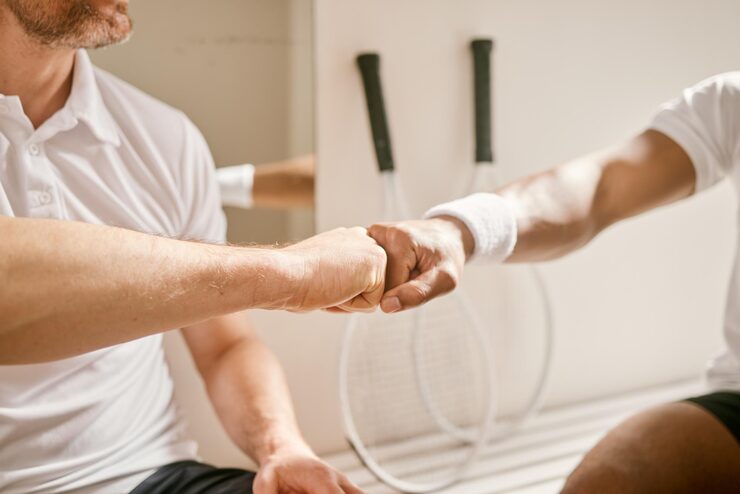
Realistic Timeline: How Long Does Tennis Elbow Take to Heal?
How long does tennis elbow take to heal depends on several critical factors, including injury severity, treatment adherence, and individual healing capacity. For mild tennis elbow recovery, patients typically experience significant improvement within 6-8 weeks of consistent physiotherapy. Moderate cases generally require 3-4 months, while severe or chronic conditions may need 6-12 months of dedicated treatment.
Research published in the British Journal of Sports Medicine demonstrates that 90% of patients achieve full recovery with conservative physiotherapy management. However, the timeline varies considerably based on when treatment begins. Early intervention dramatically shortens recovery duration—patients seeking treatment within the first month typically heal 40% faster than those who delay care for three months or longer.
Factors Influencing Your Personal Recovery Timeline
Multiple variables affect individual healing trajectories. Age plays a role, as tissue regeneration naturally slows after 40. Occupational demands matter significantly—manual laborers face longer recovery periods due to continued stress on healing tissues. Compliance with prescribed exercises proves crucial; studies show that patients performing home exercises at least five times weekly recover twice as fast as those with sporadic adherence.
Pre-existing health conditions also impact healing speed. Diabetes, smoking, and poor circulation impair tissue repair mechanisms, potentially extending recovery by 30-50%. Conversely, optimal nutrition, adequate sleep, and stress management accelerate healing. The severity and duration of symptoms before treatment initiation represent perhaps the most significant predictors—acute cases caught early respond remarkably well, while chronic conditions require patience and persistence.
Evidence-Based Strategies: How to Fix Tennis Elbow Fast
Determining “how to fix tennis elbow fast” often involves a combination of prescribed tennis elbow exercises and understanding the appropriate use of a tennis elbow brace for support. The fastest recovery occurs when patients implement a comprehensive, multi-modal approach under professional guidance. At Physio cottage, evidence-based protocols combine manual therapy, progressive exercise, and patient education to optimize healing speed.
The cornerstone of rapid recovery involves early mobilization through controlled loading. Contrary to outdated advice recommending complete rest, modern research confirms that appropriate movement stimulates healing. The key lies in finding the therapeutic window—challenging tissues enough to promote adaptation without causing further damage. Physiotherapists expertly calibrate exercise intensity, gradually progressing from isometric holds to eccentric strengthening as tissues adapt.
The Role of Manual Therapy in Accelerating Recovery
Skilled manual therapy techniques significantly enhance treatment outcomes. Deep friction massage breaks down scar tissue and promotes proper collagen alignment. Joint mobilizations restore optimal elbow mechanics, reducing compensatory stress patterns. Soft tissue release addresses muscular restrictions in the forearm, shoulder, and cervical spine that often contribute to persistent symptoms.
Instrument-assisted soft tissue mobilization (IASTM) has emerged as a powerful adjunct therapy. This technique uses specialized tools to detect and treat fascial restrictions, improving tissue quality and extensibility. Studies indicate that combining IASTM with therapeutic exercise reduces pain by 60% faster than exercise alone. Similarly, dry needling of trigger points in affected muscles provides rapid pain relief while enhancing motor control.
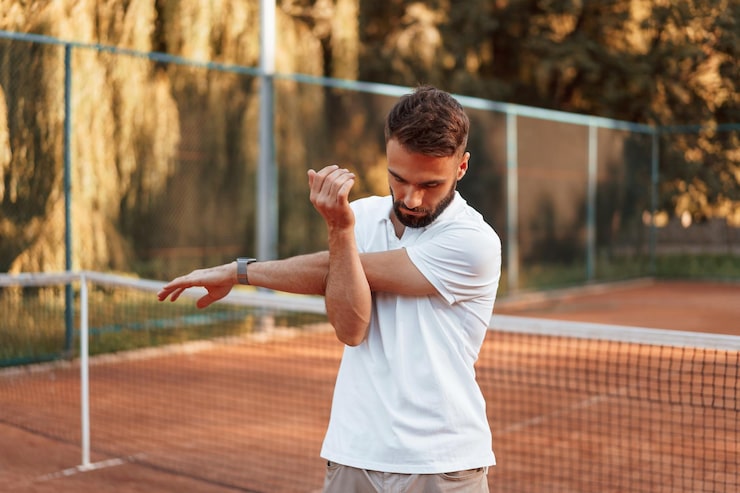
Essential Tennis Elbow Exercises for Complete Recovery
Tennis elbow exercises form the foundation of successful physiotherapy treatment. A critical component of treatment is selecting the best anti-inflammatory for tennis elbow to manage pain while consistently performing rehabilitative movements, ensuring a faster recovery time. Progressive exercise protocols target three key objectives: restoring pain-free range of motion, rebuilding tendon strength, and retraining functional movement patterns.
Phase One: Initial Pain Management and Mobility
The first exercise phase focuses on gentle mobility and pain-free activation. Wrist extensions with minimal resistance begin with the forearm supported, palm facing down, slowly lifting the hand upward against gravity. Perform 3 sets of 15 repetitions, three times daily. Forearm pronation-supination involves rotating the palm up and down with the elbow bent at 90 degrees, promoting blood flow without excessive stress.
Gentle ball squeezes maintain grip strength while respecting pain limits. Using a soft therapy ball or rolled towel, apply comfortable pressure for 5-second holds, repeating 10-15 times. Wrist flexor stretches provide balance to extensor loading—with the arm extended and palm up, gently pull fingers downward with the opposite hand, holding 30 seconds. These foundational movements prepare tissues for progressive strengthening.
Phase Two: Eccentric Strengthening Protocol
Eccentric exercises—where muscles lengthen under tension—demonstrate superior outcomes for tendinopathy. The Tyler Twist exercise specifically targets tennis elbow with remarkable effectiveness. Hold a rubber bar or rolled towel vertically, twist it with both hands (affected hand twisting into wrist flexion), extend the elbow while maintaining the twist, then slowly untwist with the affected hand. Research shows this exercise alone improves symptoms in 81% of patients.
Eccentric wrist extension involves using the unaffected hand to lift a light dumbbell (1-3 pounds) into wrist extension, then slowly lowering with the affected hand over 5 seconds. Perform 3 sets of 15 repetitions daily. As strength improves, gradually increase weight by half-pound increments weekly. Finger extensor strengthening using resistance bands addresses often-overlooked weakness—place a rubber band around all five fingertips and spread fingers against resistance, holding 5 seconds.
Phase Three: Functional Integration and Return to Activity
Advanced exercises simulate real-world demands, ensuring safe activity resumption. Wrist stability drills involve maintaining neutral wrist position while performing various arm movements—circles, reaches, and lifting patterns. Progressive gripping activities begin with light objects, gradually advancing to work-specific or sport-specific implements. The key principle involves monitoring next-day soreness; acceptable discomfort should resolve within 24 hours.
Proprioceptive training reestablishes neuromuscular control through exercises like ball tosses against a rebounder or stability ball push-ups. These movements challenge coordination and reaction time, preparing tissues for unpredictable loads encountered in daily activities. Plyometric exercises—starting with gentle wrist bounces and progressing to medicine ball catches—represent the final stage before full activity clearance.
Choosing the Best Anti-Inflammatory for Tennis Elbow
Selecting the best anti-inflammatory for tennis elbow requires understanding both pharmaceutical and natural options. Non-steroidal anti-inflammatory drugs (NSAIDs) like ibuprofen or naproxen provide short-term pain relief, particularly during acute flare-ups. However, emerging research suggests that prolonged NSAID use may actually impair tendon healing by suppressing necessary inflammatory signals that initiate tissue repair.
For optimal results, limit NSAID use to the first 7-10 days when inflammation is most pronounced, taking medications with food to minimize gastric irritation. A typical dosage involves ibuprofen 400mg three times daily or naproxen 500mg twice daily, always following package instructions and consulting healthcare providers about individual appropriateness. Beyond this window, focusing on tissue loading through exercise proves more effective than continued medication use.
Natural Anti-Inflammatory Approaches
Numerous evidence-based natural alternatives support healing without medication side effects. Omega-3 fatty acids from fish oil reduce systemic inflammation—research suggests 2-3 grams daily of combined EPA and DHA. Curcumin, the active compound in turmeric, demonstrates anti-inflammatory effects comparable to NSAIDs when taken at 500-1000mg daily with black pepper extract for enhanced absorption.
Topical treatments offer localized relief without systemic effects. Arnica gel applied three times daily reduces pain and inflammation according to multiple studies. Cryotherapy—ice application for 15-20 minutes every 2-3 hours during acute phases—remains a foundational intervention. Conversely, heat therapy becomes beneficial after the first week, promoting blood flow and tissue extensibility before exercise sessions. Some patients achieve excellent results alternating between ice and heat through contrast therapy protocols.
Tennis Elbow Brace: When and How to Use One Effectively
A tennis elbow brace, also called a counterforce brace, can play a strategic role in recovery when used appropriately. These devices work by redistributing forces away from the damaged tendon insertion, essentially “unloading” the lateral epicondyle. Research indicates that braces reduce pain during activities by up to 50%, allowing patients to maintain function while tissues heal.
The optimal brace fits snugly around the upper forearm, approximately 2-3 finger widths below the elbow crease. The pressure pad should align directly over the muscle belly of the forearm extensors. Proper tension is crucial—too loose provides no benefit, while too tight impairs circulation. The brace should feel supportively snug without causing numbness, tingling, or discoloration.
Strategic Brace Implementation for Maximum Benefit
Contrary to common practice, wearing a tennis elbow brace continuously is counterproductive. Constant bracing causes muscle deconditioning and dependency, ultimately prolonging recovery. Instead, use the brace strategically during aggravating activities—typing, lifting, gripping tools—then remove it during rest periods. This approach protects healing tissues during stress while allowing natural muscle activation during daily movements.
As symptoms improve, gradually reduce brace dependence. Start by removing it during light activities, progressively challenging tissues without support. Most patients successfully discontinue brace use within 6-8 weeks as strength and pain tolerance improve. Some individuals benefit from using the brace preventatively during high-demand activities even after full recovery, though this should not replace continued maintenance exercises and proper ergonomics.
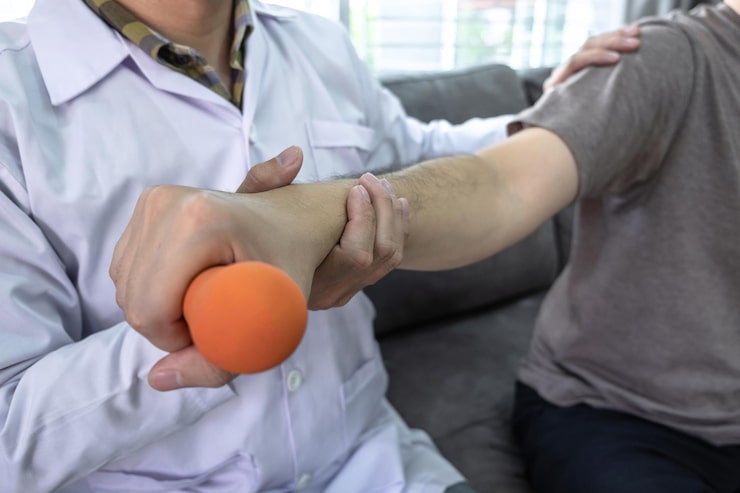
Comprehensive Treatment: How to Heal Tennis Elbow Completely
Effective strategies on “how to heal tennis elbow” will not only reduce the recovery time but also guide you through the correct tennis elbow exercises and help evaluate if a specialized tennis elbow brace is necessary for your case. Complete healing requires addressing contributing factors beyond the elbow itself, including posture, biomechanics, and ergonomic modifications.
Physiotherapists assess the entire kinetic chain—from cervical spine to fingertips—identifying dysfunction that overloads elbow structures. Shoulder weakness commonly contributes to tennis elbow, as compensatory patterns place excessive demand on forearm muscles. Core instability similarly causes distal overload. Comprehensive treatment programs address these proximal deficits through targeted strengthening, typically involving rotator cuff exercises, scapular stabilization drills, and thoracic mobility work.
Workplace and Activity Modifications
Environmental adjustments accelerate healing by reducing repetitive strain. For computer users, ensure your keyboard position allows relaxed wrist postures with forearms parallel to the floor. Consider an ergonomic mouse or vertical mouse design that maintains neutral forearm alignment. Take frequent micro-breaks—every 20 minutes, perform gentle wrist circles and shoulder rolls for 30 seconds.
Manual laborers benefit from tool modifications. Padded grips reduce vibration transmission, while extended handles decrease grip force requirements. Learning proper lifting techniques—using legs rather than arms, keeping loads close to the body—minimizes elbow stress. Athletes should review technique with qualified coaches; tennis players often need adjustments to backhand mechanics, while golfers may require grip or swing modifications to reduce eccentric loading.
Does Tennis Elbow Ever Go Away? Long-Term Outlook and Prevention
Patients often worry, “does tennis elbow ever go away?” but consistent physiotherapy and dedication to healing strategies are key to successfully understanding how to heal tennis elbow. The encouraging evidence shows that with appropriate treatment, 90-95% of patients achieve complete resolution. However, this requires commitment to the full rehabilitation protocol, not just symptomatic relief.
The persistence of symptoms beyond 12 months despite conservative treatment occurs in approximately 5-10% of cases. These patients may benefit from advanced interventions like platelet-rich plasma (PRP) injections, which use concentrated growth factors from your own blood to stimulate tissue regeneration. Shockwave therapy—using acoustic waves to promote healing—shows promise in research trials. Surgery remains a last resort, reserved for cases failing 6-12 months of comprehensive conservative care.
Prevention Strategies for Long-Term Success
Preventing recurrence requires ongoing attention to risk factors. Maintain a regular exercise routine emphasizing forearm and grip strength—performing your rehabilitation exercises 2-3 times weekly indefinitely provides insurance against symptom return. Address any new activities gradually; when starting tennis, golf, gardening, or manual labor, progress intensity and duration slowly, allowing tissues to adapt.
Recognize early warning signs of overload. Mild achiness after activity is acceptable, but sharp pain during movements or persistent next-day soreness signals excessive demand. Scale back activity immediately at the first sign of symptom recurrence, implementing a brief period of modified activity and exercise focus. This proactive approach prevents minor setbacks from becoming major relapses. Annual reassessment with a physiotherapist provides objective monitoring and allows for program adjustments as life demands change.
Also Read: How Do i Know if i Need Physiotherapy?
The Physiocottage Approach to Tennis Elbow Treatment
At Physio cottage, our tennis elbow treatment philosophy combines cutting-edge evidence with individualized care. We recognize that each patient presents unique circumstances—different occupational demands, activity goals, and healing capacities. Our comprehensive initial assessment identifies not just the elbow pathology but all contributing factors throughout your movement system.
Treatment plans integrate multiple proven modalities for synergistic benefit. Manual therapy addresses tissue quality and joint mechanics. Progressive exercise protocols are carefully calibrated to your current capacity and systematically advanced. Education empowers you with understanding of your condition, promoting active participation in recovery. We emphasize home exercise adherence through clear instruction, written programs, and video demonstrations accessible through our patient portal.
Our physiotherapists maintain expertise in the latest tennis elbow research and techniques. We utilize outcome measurement tools to objectively track your progress, adjusting treatment approaches based on response. Beyond symptom resolution, we focus on injury prevention and performance optimization, ensuring you not only recover but improve beyond your pre-injury baseline. This comprehensive approach explains our consistently excellent outcomes and patient satisfaction ratings.
Frequently Asked Questions About Tennis Elbow Recovery
Can I continue working out with tennis elbow?
Yes, with appropriate modifications. Avoid exercises that directly stress the affected tendons—pull-ups, bicep curls with pronated grip, and heavy deadlifts typically aggravate symptoms. Focus on lower body training, core work, and opposite-arm exercises. For upper body work, use neutral or supinated grips and lighter weights with higher repetitions. Always listen to your body; acceptable discomfort during exercise should resolve within 2 hours afterward. If pain persists or worsens the next day, you have exceeded tissue capacity. Consult your physiotherapist for specific guidance on modifying your particular workout routine.
How do I know if my tennis elbow is getting better?
Improvement manifests through several measurable changes. Initially, you will notice decreased pain at rest and during light activities. Grip strength gradually improves—you can test this by monitoring your ability to hold objects of known weight for increasing durations. Range of motion increases, particularly pain-free wrist extension. Sleep quality often improves as nighttime pain diminishes. Functional improvements appear progressively—tasks like opening jars, shaking hands, and lifting objects become easier. Track these markers weekly; consistent positive trends indicate effective treatment. Plateaus or setbacks warrant reassessment by your physiotherapist to adjust treatment approaches.
Is heat or ice better for tennis elbow?
The answer depends on your condition stage. During acute flare-ups characterized by significant pain and inflammation, ice therapy proves most beneficial—apply for 15-20 minutes every 2-3 hours, always with a thin towel between ice and skin to prevent cold injury. After the first 7-10 days, once acute inflammation subsides, heat application becomes more appropriate, particularly before exercise sessions. Heat increases blood flow and tissue extensibility, preparing muscles and tendons for activity. Many patients achieve excellent results with contrast therapy—alternating 3 minutes of heat and 1 minute of ice for 20-minute sessions—which pumps circulation through tissues, promoting healing.
Will cortisone injections cure my tennis elbow faster?
Cortisone injections provide rapid short-term pain relief but do not accelerate long-term healing and may actually impair recovery. Research published in The Lancet demonstrates that while cortisone reduces pain for 4-6 weeks, patients receiving injections have worse outcomes at 6-12 months compared to those using physiotherapy alone. Cortisone weakens collagen synthesis and may cause tendon degeneration with repeated use. Consider injections only for severe pain preventing sleep or basic function, using them as a bridge to allow participation in physiotherapy. Never use cortisone as a standalone treatment; always combine with comprehensive rehabilitation for optimal outcomes.
When can I return to tennis or my sport after recovering?
Return to sport requires meeting specific criteria, not just symptom absence. You should demonstrate pain-free grip strength equal to your unaffected side, measured using a dynamometer. Full pain-free range of motion in wrist extension and forearm rotation must be achieved. Sport-specific movements—serving motions, backhand strokes—should be possible without pain during or after activity. Gradual progression is crucial; begin with gentle hitting at 50% intensity for short sessions, increasing by 10-15% weekly. Most patients return to full sport participation 8-12 weeks after symptom resolution. Maintain your rehabilitation exercises indefinitely 2-3 times weekly as preventative conditioning.
Your Path to Recovery Starts Now
Understanding how long does it take for tennis elbow to heal with physiotherapy provides the foundation for realistic expectations and treatment planning. Recovery typically spans 6 weeks to 6 months depending on severity and adherence, but the journey begins with your first step. Delaying treatment only prolongs suffering and extends healing timelines—early intervention dramatically improves outcomes.
If you are experiencing tennis elbow symptoms, don’t wait for the condition to worsen. Contact Physio cottage today to schedule a comprehensive assessment with our specialized physiotherapists. We will develop a personalized treatment plan targeting your specific needs, combining hands-on therapy, progressive exercises, and patient education to accelerate your recovery.
Remember, mild tennis elbow recovery responds exceptionally well to proper treatment. By implementing the strategies discussed—evidence-based exercises, appropriate use of anti-inflammatories and bracing, workplace modifications, and professional physiotherapy guidance—you can achieve complete resolution and return to pain-free activity. Your recovery is not just possible; it is probable with commitment and proper care. Take control of your healing journey today and experience the relief that comes from expert physiotherapy treatment.
References:
- British Journal of Sports Medicine – Tennis Elbow Treatment Outcomes.
- The Lancet – Cortisone Injection vs Physiotherapy for Lateral Epicondylitis.
- American Academy of Orthopaedic Surgeons – Clinical Practice Guidelines.

